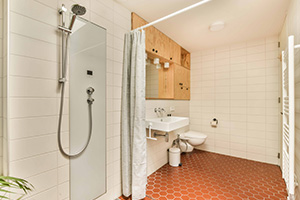 Adding a bathroom in your basement can increase your home’s value and functionality. However, without proper plumbing, draining wastewater from below-ground bathrooms can be challenging. This is where a sewage ejector pump comes in. In this blog, we’ll provide a detailed overview of the sewage ejector pump installation process, along with an easy-to-follow diagram to help you complete the project.
Adding a bathroom in your basement can increase your home’s value and functionality. However, without proper plumbing, draining wastewater from below-ground bathrooms can be challenging. This is where a sewage ejector pump comes in. In this blog, we’ll provide a detailed overview of the sewage ejector pump installation process, along with an easy-to-follow diagram to help you complete the project.
What Is a Sewage Ejector Pump?
A sewage ejector pump is a plumbing device designed to pump wastewater and solid waste from below-ground bathrooms to the main sewer line or septic tank. It’s essential for basement bathrooms because gravity alone cannot move the waste upward to the sewer system.
Why Do You Need a Sewage Ejector Pump?
If you’re planning to install a bathroom in your basement, you need a solution to handle the wastewater generated from toilets, sinks, and showers. A sewage ejector pump ensures that waste is efficiently transported, preventing clogs and maintaining the integrity of your plumbing system.
Tools and Materials Needed
Before starting the installation, gather the following tools and materials:
- Sewage ejector pump kit
- PVC pipes (for discharge and venting)
- Basin or pit with a sealed lid
- Check valve
- Pipe cutter
- Wrenches
- Silicone sealant
Having the correct tools ensures that your installation will be smooth and efficient.
Step-by-Step Installation Process
Step 1: Prepare the Pit
The first step in the installation process is digging a pit in your basement floor to house the sewage ejector pump basin. Make sure the pit meets the depth and diameter requirements specified by the manufacturer. Once the pit is ready, install the basin and ensure it sits level.
Step 2: Install the Pump
Place the sewage ejector pump inside the basin. Connect the pump to the discharge pipe, which will carry wastewater from the pump to your home’s sewer line. Use a check valve on the discharge pipe to prevent backflow.
Step 3: Connect the Vent Pipe
Attach a vent pipe to the basin. The vent pipe is crucial for preventing pressure build-up inside the system and eliminating odors. The vent pipe should be routed to your home’s plumbing vent system or directly outside.
Step 4: Seal the Basin Lid
Once the pump, discharge pipe, and vent pipe are installed, seal the lid of the basin. A sealed lid prevents gases and odors from escaping into your basement. Use silicone sealant for a tight and secure fit.
Step 5: Test the System
After the installation is complete, test the pump by running water into the basin. Flush the basement toilet or run water through the sink to check if the pump activates and efficiently removes the wastewater. If everything functions correctly, your installation is complete.
Diagram of a Basement Sewage Ejector Pump Installation
Below is a simplified diagram illustrating the key components of a sewage ejector pump installation:
- Pump Basin: Where wastewater collects.
- Sewage Ejector Pump: Pumps waste to the main sewer line.
- Discharge Pipe: Carries waste from the pump to the sewer.
- Check Valve: Prevents backflow into the basin.
- Vent Pipe: Ensures proper airflow and odor control.
Maintenance Tips for Your Sewage Ejector Pump
To keep your sewage ejector pump functioning efficiently, follow these tips:
- Inspect the pump and check valve annually.
- Clean the basin periodically to prevent sediment build-up.
- Avoid flushing non-biodegradable materials down the toilet.
Proper maintenance can extend the life of your pump and save you money on repairs.
Conclusion
Installing a sewage ejector pump for your basement bathroom may seem daunting, but with the right tools, a clear understanding of the process, and a detailed diagram, the task becomes much more manageable. This investment ensures efficient wastewater management and adds long-term value to your home.
Ready to tackle your basement bathroom project? Use this guide and diagram to make your installation seamless. Contact Us Today!